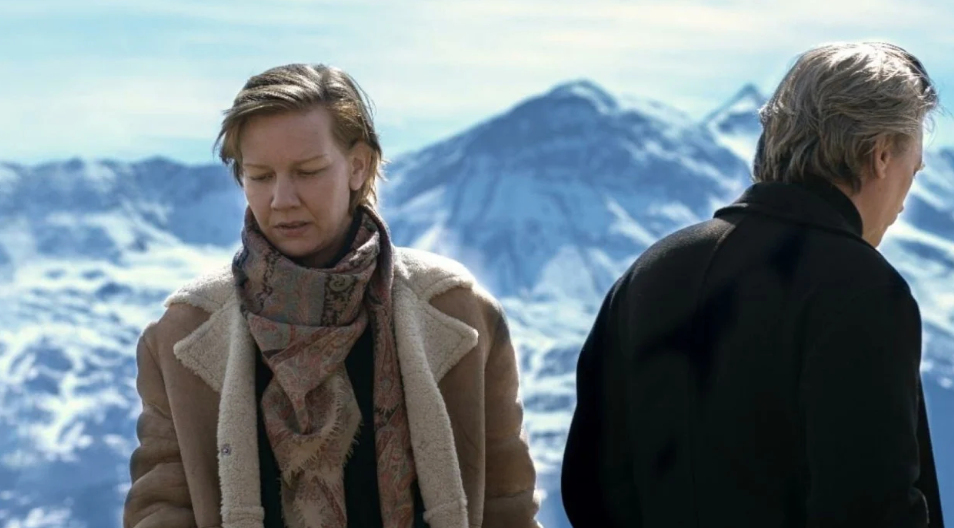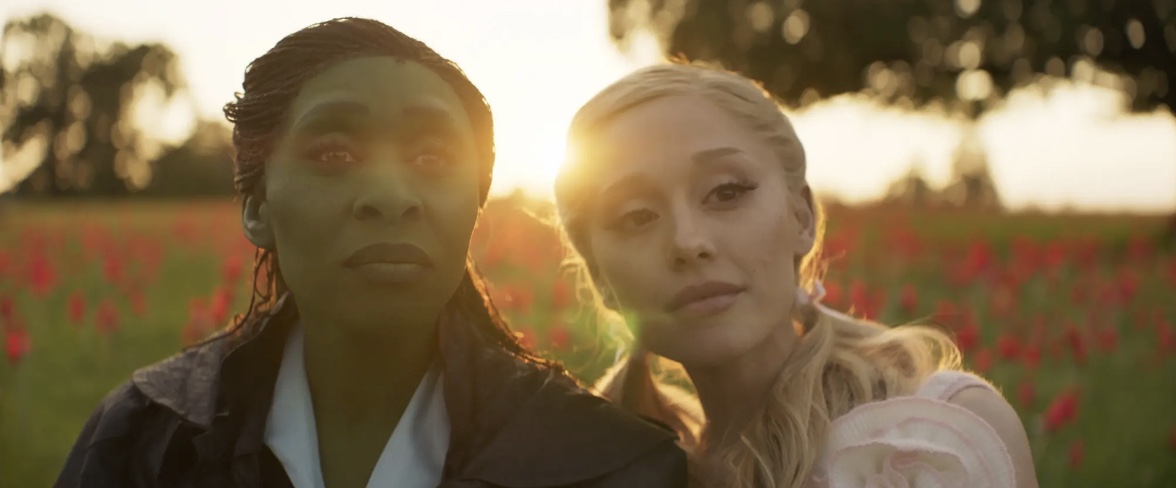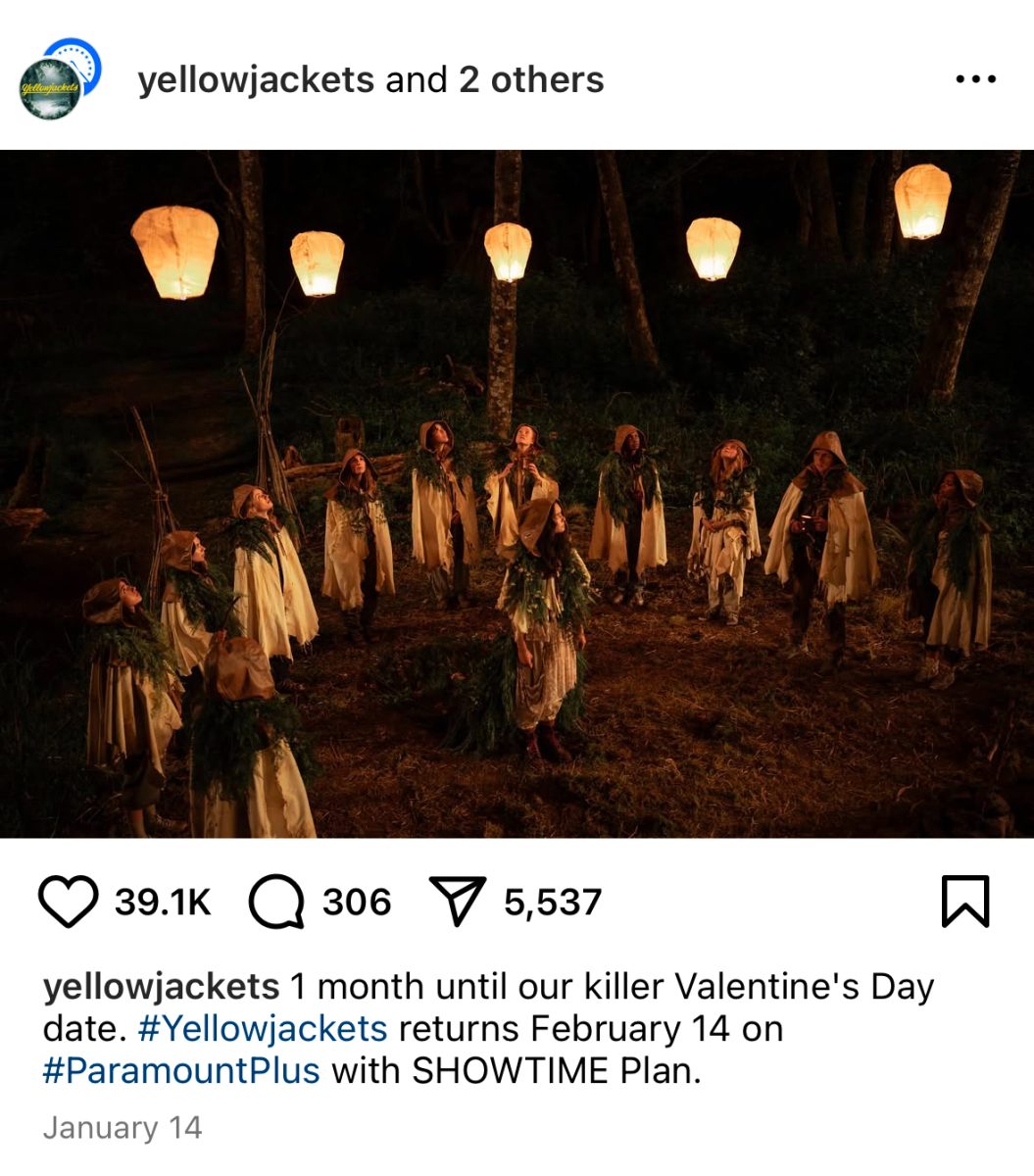Who’s to judge a Best Picture? Well, even though the Academy already has, we did too.
The 10 films nominated for an Academy Award, or Oscar, for Best Picture were announced a few months ago, and at the award ceremony on March 10, 2024, Oppenheimer won. Regardless, we have written bite-sized reviews of all ten films to hopefully simplify — or toughen — your next few movie night decisions.
Disclaimer: The authors of these reviews are cinefiles, but amateur film critics nonetheless.
Barbie (1h 54m)
Pink. Plastic. Power. This is what Barbie, an empowering, whimsical comedy about Mattel’s Barbie dolls, embodies. The film — directed by Greta Gerwig and starring Margot Robbie (producer) as stereotypical Barbie and Ryan Gosling, nominated for Best Supporting Actor, as Ken — is set in the matriarchal world of Barbie Land, juxtaposed with the patriarchal reality of Los Angeles’ Venice Beach.
The filmmakers advertised the movie as one that people who love or hate Barbie can enjoy. Margot Robbie told Vogue, “We acknowledge that there are a lot of people who aren’t fans of Barbie. And in fact, they actively hate Barbie.”
Barbie did stir up controversy in the audience, including unease with the role of Mattel, the toy company that created the Barbie doll, in the engineering of this film.
Mattel’s involvement in the production of Barbie left a bitter taste in many viewers’ mouths, including ours, as it implied a mixed objective — a hope that the movie would generate publicity and revenue for the company, not just challenge the ideas behind womanhood through a classic toy.
For this reason, we are reluctant to say that we loved it. Despite this, Barbie was a fun and surprising movie that we would still recommend.
Poor Things (2h 21m)
Emma Stone won Best Actress for her unparalleled performance in Poor Things, directed by Yorgos Lanthimos. This extraordinary film also featured remarkable acting by Mark Ruffalo, nominated for Best Supporting Actor.
Poor Things asks the audience to indulge in the odd world it presents, which could make connecting to the film somewhat difficult for viewers. But, the movie deserves all the attention and the four Oscars it received in Production Design, Makeup and Hairstyling, and Costumes in addition to Best Actress.
Poor Things is a Frankenstein-esque story set in a stylized reality, a reality like one built in your head in a dream. The range of its visual effects, the perplexing character of Bella Baxter (Emma Stone), and her guardian Godwin’s hybrid creations give Poor Things an unsettling aura.
Bella Baxter learns to operate in society as a woman whose mental age was reset to a baby’s, creating an opportunity for brilliant comedy. Poor Things’s story also brings up questions about societal duties, manners, what it means to conform, and why we do it. It allows for the audience’s reflection on the fluctuating ways in which society esteems conformity today.
The world of Poor Things is different from ours, no doubt: welcome the weirdness to experience the art of this film.
American Fiction (1h 57m)
American Fiction, directed and adapted for the screen by Cord Jefferson, comments on the white gaze (a term coined by novelist Toni Morrison referring to the standard of creation that prioritizes a white audience’s experience). The movie in itself is orchestrated to play into the concept of the white gaze in order to mock it. It uses this lens to touch on the perceived African American experience in a thought-provoking way.
The film’s screenplay, based on the 2001 novel Erasure by Percival Everett, is an obvious standout and it won an Oscar in the Adapted Screenplay category. The impressive writing elevates this film with otherwise mediocre production choices — which could be explained by the fact that American Fiction is Jefferson’s first directing project.
American Fiction also deals with the rise of hypocrisy and uncertainty about how, and whether or not, to depict the truth in sharing the African-American experience through media. This leads the story to tricky contexts for main character Thelonius ‘Monk’ Ellison (Jeffrey Wright) that open up pockets of comedy. But it is also a serious piece, managing to subtly shed light on society’s intolerance for, and assumptions about blackness in America, subjects that are difficult to address or often dismissed.
Although American Fiction didn’t win the Best Picture Award, in the context of Monk’s journey of testing society’s open-mindedness toward the African American experience, winning the Oscar may have appeared ironic. Furthermore, it could have played too easily into the comedy of the film, even discrediting its point as a whole.
However, this does not mean that American Fiction isn’t worth a watch, because we urge you, it is.
Maestro (2h 9m)
Maestro is the passion project of Director Bradley Cooper, who also played the role of Leonard Bernstein, the life of whom this film depicts. The theme of passion resounds in Maestro as the film reveals the pressure put on Bernstein to fulfill his potential to become the first great American conductor (as before him, the field was dominated by Europeans).
Bernstein juggles this pressure with his competing love for composing, his homosexuality, his wife, and his histrionic personality disorder, straining the artist’s desire to achieve and excel in as many fields as possible. While his talent and versatility were applauded by the public, Bernstein’s personal decisions revealed selfishness and left many betrayed.
From the get go, the audience is immersed in Bernstein’s time, not only with the set design, but also the visual effects. Maestro used vintage camera lenses and orchestrated black and white or grainy footage as well as an abnormal aspect ratio (meaning the movie doesn’t take up as much space on the screen), mimicking the qualities of mid-19th cCentury film.
Maestro’s classical soundtrack is a standout. Bernstein’s music accompanies the scenes of his life, immersing the audience in his art on an auditory level as well.
Maestro’s plot was slowly paced and followed Bernstein’s adult life biographically without clear narrative direction for the audience. As such, it can be best appreciated by someone specifically interested in Bernstein’s music, career, and personal life.
Anatomy of a Fall (2h 32m)
Justine Triet’s Anatomy of a Fall is a striking murder mystery set in the French Alps and proved its cinematic worth earlier in the award season as the 2023 recipient of the Cannes Film Festival Palme d’Or. It revolves around Sandra, a woman accused of murdering her husband, and her son Daniel. New evidence is sprinkled throughout the film, provoking emotional indulgence in the characters, a racing heartbeat, and just a taste of resolution for the viewer while maintaining ambiguity through to the final scene.
The film is satisfyingly entertaining, thought-provoking, and well-paced.
Anatomy of Fall — which was produced in France and directed by Justine Triet — is multilingual, with about half of its dialogue in English and the other half in French with English subtitles (which we must admit, on the Amazon Prime Video version, low quality translations were heavily delayed.)
Multilingualism added depth to the story as Sandra’s character is far more comfortable expressing herself in English, which is challenged when she has to speak in trial in the French town of Grenoble.
Anatomy of a Fall is the kind of movie that will become a classic, and co-writers Justine Triet and Arthur Harari were rewarded for their genius by the Academy, winning the Best Original Screenplay Oscar. We hope that this groundbreaking murder mystery influences the film industry to continue to experiment with cultural complexities like language and more.
Oppenheimer (3h 0m)
Disclaimer: This review is modified from a previous review, “Oppenheimer: A Movie. A Lesson. A Warning.”, published in The Tower last August.
Against the backdrop of violent rains, booming thunder, and sharp winds, stunning shots of pure orange fire and ash vividly depict Trinity, the first atomic detonation, in Christopher Nolan’s summer blockbuster and Oscar Best Picture Oppenheimer.
The story follows the theoretical physicist J. Robert Oppenheimer — played passionately by Cillian Murphy, who won Best Actor — across his turbulent and complex lifetime, touching on personal and professional milestones, including his work on The Manhattan Project, the anti-communist attacks that nearly ruined him, and the friendships and romances that shaped his adulthood.
Written and directed by Nolan, a man notorious for creating films with extraordinarily complex storylines, the movie showcases a dense, event-filled story which follows three timelines woven together. Wendy Ide, reviewing the film for The Guardian, described the plot as “a knotty mesh of a structure. Time in Oppenheimer doesn’t feel entirely linear.”
While most of the film is in bold, high quality color, one of the timelines is depicted in black and white. Kirsten Acuna, reviewing the film for Insider, explained that the film’s color changes are an “artistic styling used to highlight the juxtaposition between the film’s protagonist, Oppenheimer, and his eventual nemesis, Strauss.”
Released July 21, 2023, Oppenheimer was an immediate box-office success, reaching almost $1 billion in ticket sales — the highest grossing biopic in history. What fascinated moviegoers is perhaps the blockbuster’s strong message for us today. Oppenheimer is a warning to humanity of the fragility of our safety: we are all at the mercy of world leaders who hold the nuclear codes that both protect, and threaten to destroy, the world.
Perhaps Cillian Murphy put in best in his Oscars acceptance speech for Best Actor: “For better or for worse, we are living in Oppenhiemer’s world…so I would like to dedicate this award to peacemakers everywhere.”
Killers of the Flower Moon (3h 26m)
Disclaimer: This review is modified from a previous review, “Killers of the Flower Moon: A Truthful American Tragedy” , published in The Tower last November.
Martin Scorsese’s latest film, adapted from American journalist David Grann’s 2017 best selling book Killers of the Flower Moon: The Osage Murders and the Birth of the FBI, tells the unsettling story of Osage tribe members, newly wealthy from the discovery of oil on their otherwise bare reservation lands in northeast Oklahoma.
In the 1920s, the Osage quickly became the richest people in America per capita, living in beautiful homes, owning expensive cars, and employing white servants. But with wealth comes trouble. In the almost three and a half hour film, the audience witnesses the frightening and violent manipulation, murder, and robbery of at least 150 Osage by deceitful white Americans, known as the Reign of Terror.
The film focuses on Ernest Burkhart, played by Leonardo DiCaprio, a World War I veteran who unassumingly moves to the Osage Nation at his uncle’s request. His uncle, William Hale, played by Robert De Niro, has been settled there for decades.
While the film humanizes Ernest, he is nowhere near innocent. While he was manipulated by his uncle, he is nevertheless accountable for how far his actions go as well as his unbelievable level of ignorance. Scorsese uses this film to provoke self-reflection on who influences our actions, and how we can live freely and morally.
The Holdovers (2h 13m)
Alexander Payne’s The Holdovers is only as powerful as you choose it to be. On its surface, the plot seems simple: an elite New England prep school, pretentious kids, a sour professor, and two weeks of winter break. However, if you look closer, The Holdovers is a movie about human connection. It is about lonely people finding each other, and feeling just a little bit better for it.
The Holdovers centers around three very different characters — a smart but damaged troublemaker, left at school by his selfish mother and stepfather; a bad-tempered professor in charge of babysitting a handful of students with nowhere to go; and the school’s head cook, who just lost her son in the Vietnam War, played incredibly by Da’Vine Joy Randolph, who won Best Supporting Actress at the Oscars for her performance.
The Holdovers is a rare story that can make you laugh and cry in such a short span of time.
In one scene, the professor, Paul Hunham, and the student, Angus Tully, bump into Hunham’s old Harvard friend. They make up ridiculous lies to make the sorry Hunham appear enviable, and laugh about it afterwards, as the audience does with them. Yet just scenes later, Hunham takes Angus to visit his father in a mental hospital on Christmas Day. Angus excitedly shares updates on his life and achievements, even though his father’s mind is too troubled to acknowledge anything. Just as quickly as the audience previously laughed, we now cry as Angus holds back his tears — it all finally makes sense.
While sad at moments, The Holdovers is ultimately a feelgood movie. In a time of such disillusionment, Payne’s masterpiece reminds us that at the end of the day, humans — even the most troubled ones — are hardwired to connect.
Past Lives (1h 46m)
In Celine Song’s Past Lives, simplicity shines as true elegance. Made by A24, a young production company behind 2023 Oscar Best Picture and Best Original Screenplay winner Everything Everywhere All At Once, Song’s directorial film debut follows two childhood friends over the course of two decades.
The friends — Nora Moon and Hae Sung — grow up together in Seoul, South Korea, but when Nora moves to New York City, they lose contact. Decades later, Hae Sung reaches out to Nora, and the two reconnect. Eventually, Hae Sung decides to spend his savings to fly to New York City and find Nora, who, to his dismay, is married. While they realize they cannot be together, they are forced to contemplate how certain decisions change the course of an entire life and relationship.
What makes Past Lives so beautiful and thought-provoking is the nuances in both screenplay and cinematography. Even Song’s staging reflects the small decisions that add so much underlying meaning to her film. In one scene, she stages the American husband physically isolated from the conversation between Nora and Hae Sung — signifying the deeper connection between those two.
Song’s passion for the film is not only because it is her first, but also because the plot is semi-autobiographical and inspired by real events from her life. It goes to show that the best stories always come from within.
The Zone of Interest (1h 46m)
Killers of the Flower Moon and Oppenhiemer both tell stories of grim moments in modern history. In both films, they leave the audience with a sense of reflection, awareness, and awe. Unfortunately, The Zone of Interest lacked the latter.
The Zone of Interest — Jonathan Glazer and A24’s newest film about a Nazi commandant’s perspective running Auschwitz, the largest death camp during the Holocaust — leaves the audience in deep contemplation about how humans rationalize even the worst of behavior, and how others stay complacent amidst the behavior. However, the film fails to leave the audience with any sense of shock or satisfaction with the filmmaking itself.
For many moviegoers, this feeling is okay. Films, for them, are primarily meant to comment on important complexities in our lives, and force reflection in our society as a whole. There is no doubt that The Zone of Interest successfully accomplishes this.
However, for many others, films are primarily meant to use artful cinematography and entertaining, complex plots to produce stories that transports them into another world. By that definition, The Zone of Interest fails to act as an escape. Its cinematography, costumes, and production design are bland and the plot’s structure itself is repetitive and uneventful.
When reviewed comprehensively, The Zone of Interest did not make nearly as compelling a case for Best Picture as the other nominees. Despite this, films mean something different for everyone, so we urge you to watch The Zone of Interest first before judging it too harshly.
Closing:
The late Robert Altman, a five-time Oscar nominated director, said cinema gives us the chance to live many lifetimes. This year especially, Altman’s assertion seems to be the case.
Be it a three hour scientific biopic or a two hour pretty-in-pink feel good, a thrilling murder mystery or the rebirth of a woman with an infantile mind, the diversity and complexity of the 10 Best Picture Nominees leave you with no wrong choice.
In the end, the Oscars are not about winning and losing, but rather about celebrating the incredible accomplishments of the film industry, and recognizing their influential place in our culture and society. We urge you to watch all the nominated films for yourself.










